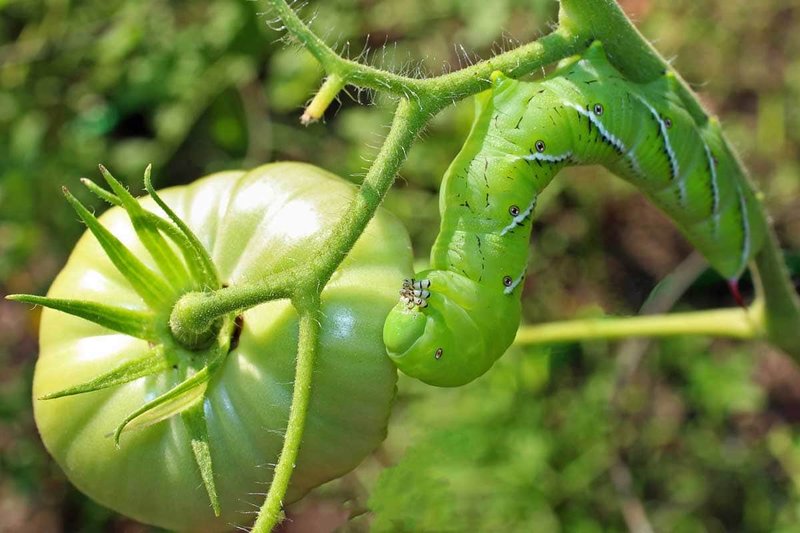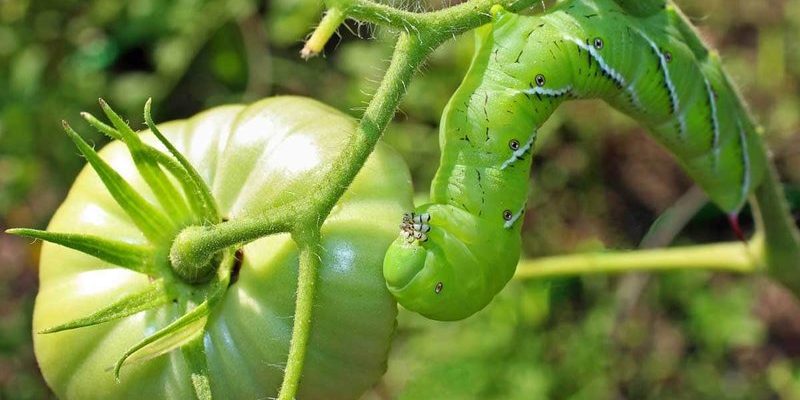
Think of it this way: if a hornworm were a guest at a party, tomatoes would be the star of the buffet table. Their lush leaves and juicy fruit are like a gourmet feast for these caterpillars. Understanding what pulls in these pests can help you shield your plants from their ravenous appetite. In this article, we’ll take a deep dive into the behaviors and preferences of these hungry hornworms to keep your garden thriving.
Understanding Hornworms and Their Appeal
Hornworms, specifically the **tobacco hornworm** and the **tomato hornworm**, are the larvae of moths that choose to feast on nightshade plants, particularly tomatoes. So, what makes these plants so irresistible to hornworms? Well, it boils down to a mix of the plant’s **nutritional value** and its availability.
Tomatoes are packed with moisture and nutrients, making them a perfect source of sustenance for developing hornworms. They thrive in warm climates, where tomatoes often grow—think of sunny gardens and greenhouses. This connection creates a prime environment for hornworms to flourish. Additionally, hornworms are attracted to the **scent** emitted by tomato plants. These caterpillars have an incredible sense of smell, helping them locate their food from a distance. That scent can act like a beacon, calling in these hungry pests.
As if that weren’t enough, hornworms have a knack for finding stress points in plants. If your tomatoes are under any stress, such as lack of water or nutrient deficiency, this can make them even more appealing. When a plant is stressed, it might release certain compounds that signal to hornworms that it’s time for a meal. So, not only can tomatoes attract hornworms, but stressed plants can also amplify that attraction.
The Lifespan and Habits of Hornworms
To truly understand what draws hornworms to tomato plants, it’s useful to know a bit about their lifecycle. These larvae typically hatch from eggs laid by adult moths in the warm summer months. Once they emerge, they enter a hungry phase, munching on leaves and fruit until they reach maturity.
In their early days, hornworms are tiny and blend seamlessly with the tomato leaves. But as they grow, they can become quite large—up to four inches long! At that size, they can devour massive amounts of plant material. They generally prefer feeding at night, spending their days hidden among the foliage. This nocturnal behavior allows them to avoid predators while indulging in their leafy buffet.
Preventative measures are crucial here. Monitoring your plants closely can help you catch hornworms while they’re still small. An early intervention can save you a lot of headaches and potential damage to your tomato plants. Honestly, if you spot one or two, there’s no need for panic; just remove them gently.
Environmental Factors That Attract Hornworms
Several environmental factors can play a role in attracting hornworms to your tomato plants. Let’s break it down a bit.
- Temperature: Hornworms love warm temperatures. If your garden is in a sunny spot, the combination of warmth and moisture can create a hornworm hotspot.
- Moisture: Since hornworms need water to thrive, areas with consistent moisture levels can be inviting. Overwatering can sometimes create a conducive environment for these pests.
- Plant Density: Crowded gardens can attract hornworms. If you’ve planted tomatoes closely together, it could encourage these pests since they find plenty of areas to hide.
So, if you notice hornworms flourishing in your garden, take a moment to consider the environmental factors at play. Sometimes, simple changes can deter them from making a home in your plants. For instance, ensuring proper spacing for air circulation can make a significant difference.
Companion Planting as a Deterrent
Companion planting can be an effective strategy for keeping hornworms at bay. By introducing certain plants that repel pests, you can create a more balanced garden ecosystem. Here are some plants you might consider:
- Basil: This aromatic herb not only enhances the flavor of tomatoes but also serves as a natural deterrent for hornworms.
- Marigolds: These bright flowers can attract beneficial insects that prey on hornworms, creating a natural balance in your garden.
- Garlic: The strong scent of garlic can help mask the smell of tomatoes, making it harder for hornworms to locate their favorite food source.
The idea is simple: plant these companions near your tomatoes to throw off the hornworms’ sense of smell and disrupt their feeding habits. Plus, it can add beauty and diversity to your garden.
Identifying Hornworm Infestations
Knowing how to spot hornworm infestations is crucial for protecting your tomato plants. It’s not just about the visible damage; you need to look for specific signs.
When inspecting your plants, keep an eye out for:
- Chewed Leaves: One of the most obvious signs is leaves with jagged edges or missing sections. If you see large chunks gone, look closely for hornworms hiding nearby.
- Frass: This is the term for hornworm droppings. Small, dark pellets on the leaves or ground around your plants can indicate a nearby hornworm.
- Caterpillar Sightings: If you actually see a hornworm, chances are you have a few more nearby. Their green color allows them to blend in, but it’s still possible to spot them if you take the time to look closely.
By regularly checking your tomato plants, you can catch hornworm infestations before they spiral out of control.
Natural and Chemical Controls for Hornworms
If you find hornworms wreaking havoc on your tomato plants, don’t worry! There are ways to manage them naturally or use chemical solutions if necessary.
For natural control:
– **Handpicking**: This is the most straightforward method. Simply remove the hornworms directly from your plants. It might feel a bit gross, but it’s effective!
– **Beneficial Insects**: Introducing natural predators like ladybugs or parasitic wasps can help control the hornworm population without harming your plants.
If you decide to go the chemical route, consider products specifically designed for caterpillars, like **Bacillus thuringiensis (Bt)**. Bt is a naturally occurring bacterium that targets hornworms while being safe for most beneficial insects and humans.
Here’s the thing: while chemical controls can be effective, always read the labels and apply them responsibly. You want to ensure you’re protecting your plants without harming the overall ecosystem.
Final Thoughts on Protecting Tomato Plants
In essence, hornworms are drawn to tomato plants because of their nutrient-rich leaves and fruit. By understanding what attracts them and taking proactive measures, you can protect your garden. Simple solutions like companion planting, monitoring for signs, and handpicking can make a world of difference.
Every garden has its challenges, but with a bit of knowledge and effort, you can keep your tomato plants healthy and thriving. Next time you see those beautiful tomatoes, you’ll also have the confidence to protect them from pesky hornworms. Happy gardening!

